
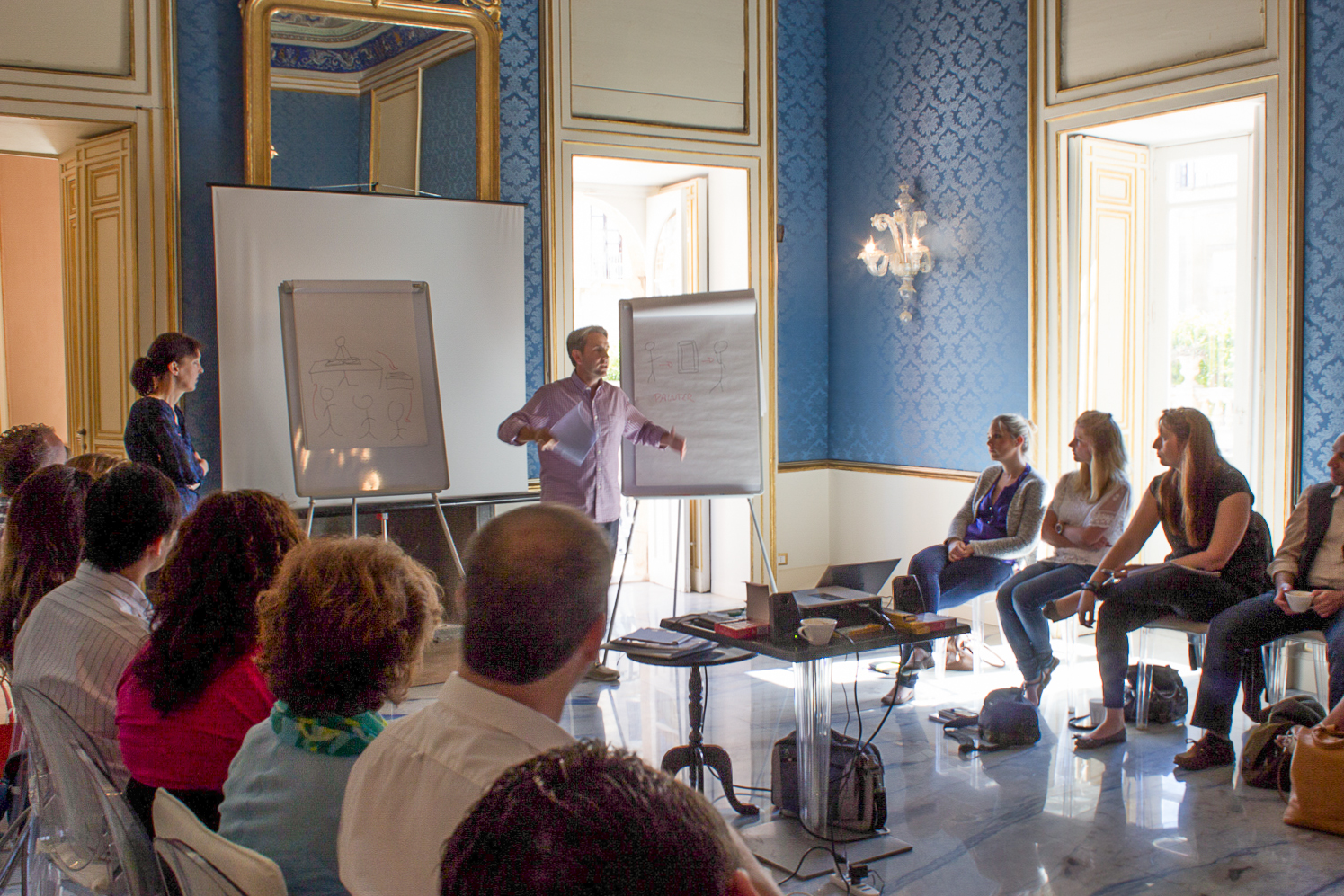
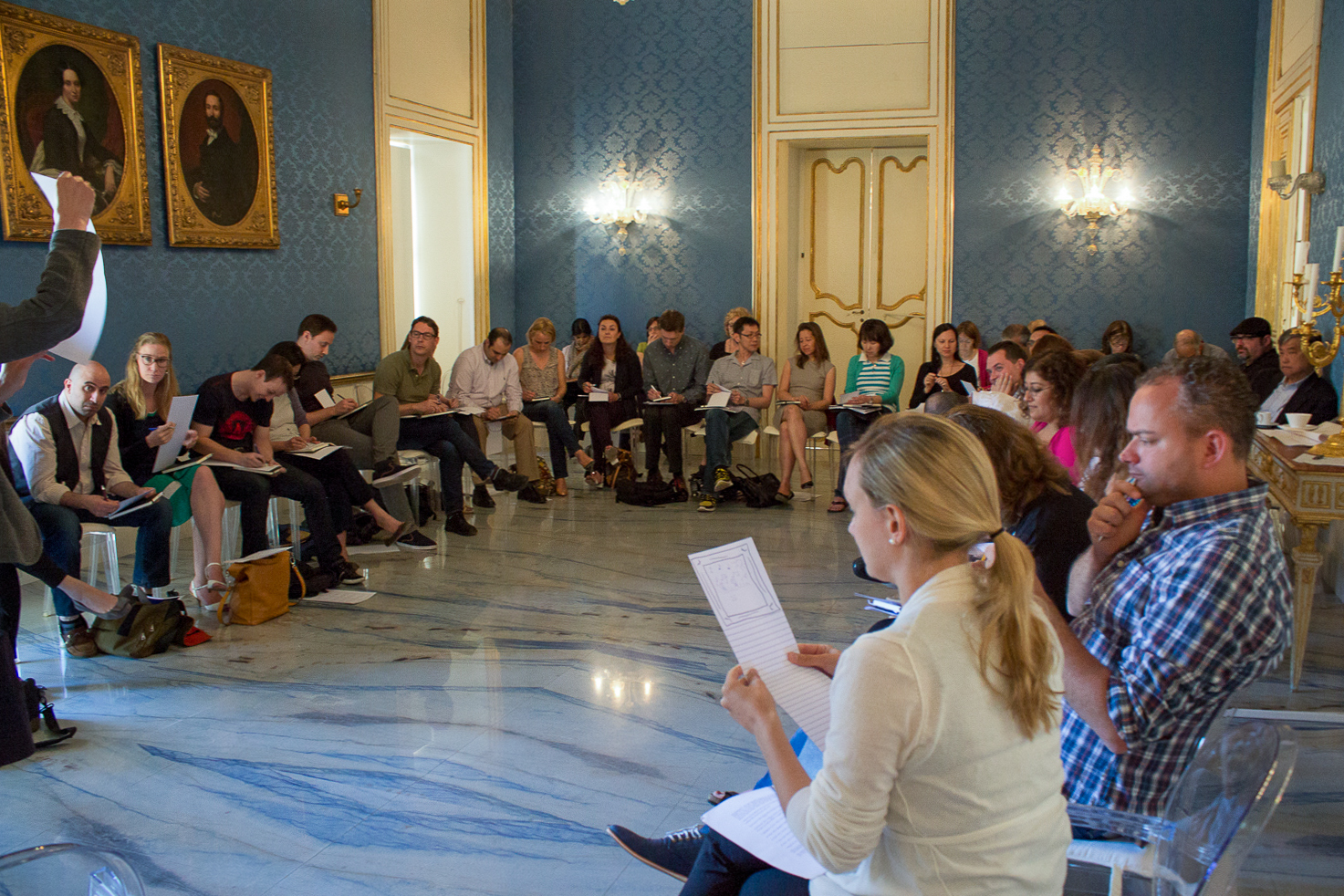
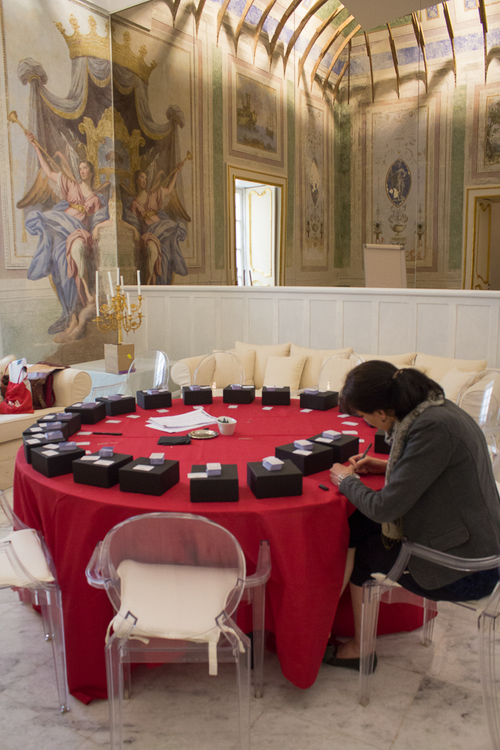
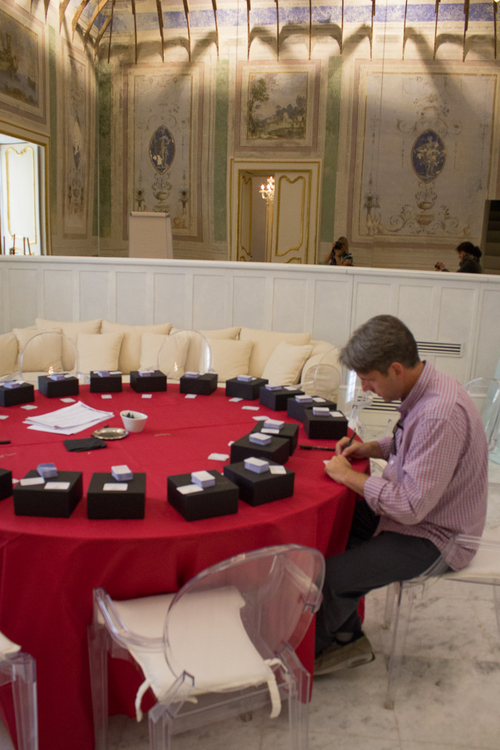

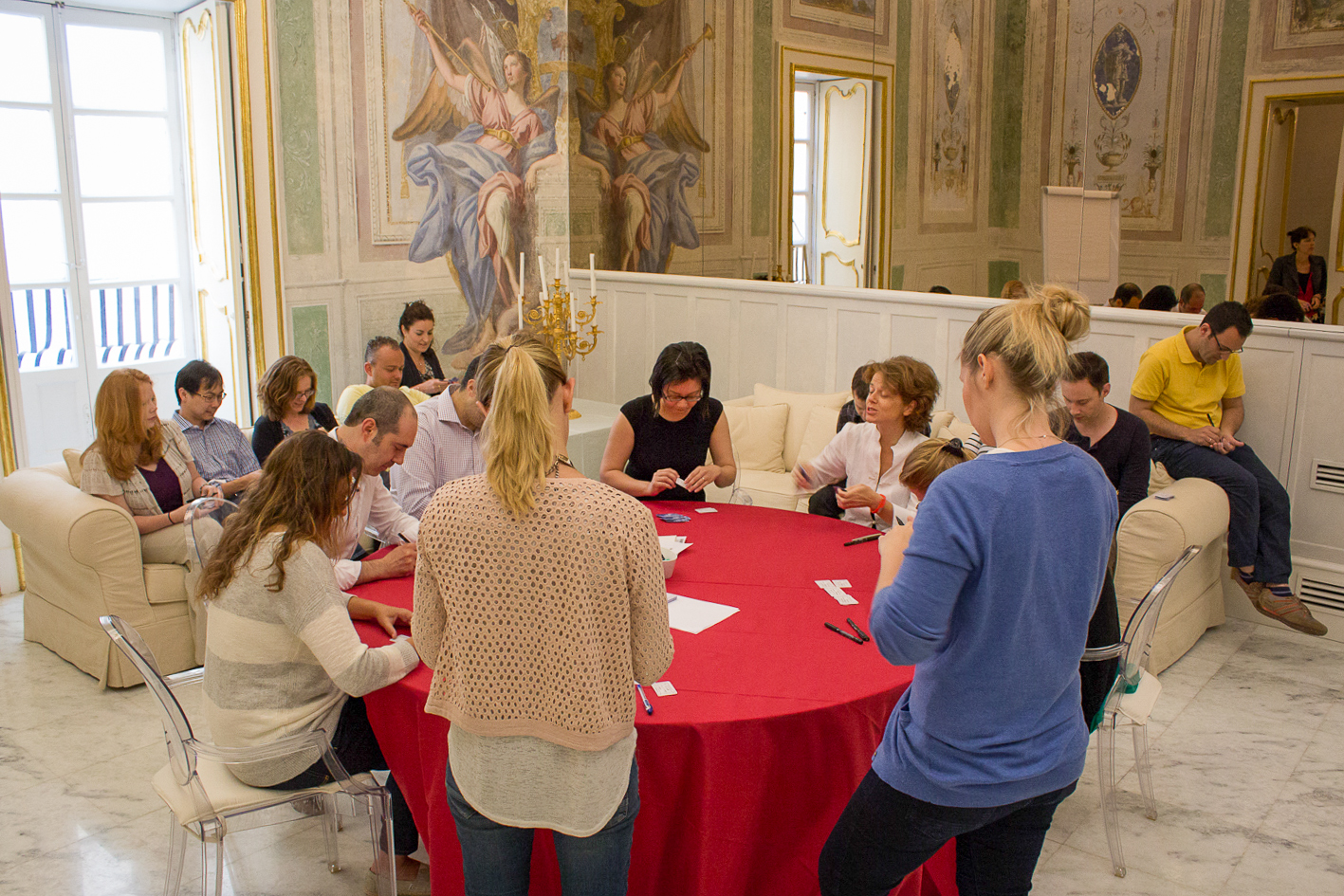
I've taught in a wide array of buildings, but this is for sure my first Rococo palace. Palazzo Borgia del Casale, Ortigia, Sicily. Post doc certificate course, Eureka Institute for Translational Medicine, 2014.
I feel most comfortable as an artist when I am off balance. I often set obstacles for myself that force me out of conventional approaches toward art making. The most pleasurable of these “obstacles” is working collaboratively, particularly with non-visual artists. It makes sense that knowledge is embodied in artistic and academic disciplines, but that those disciplines are just starting points for new interdisciplinary forms, for which no name currently exists.
This summer, my longtime friend and colleague Anna van Suchtelen and I were faculty members at the Eureka Institute for Translational Medicine. Eureka's course is an intensive week-long residency that brings together 30 post-doctoral "students" (they are highly successful scientists in their own right) with nearly as many elite faculty members to engage a remarkable curriculum designed to prepare the emerging practitioners for the obvious and latent challenges they will face attempting to improve health and fight disease. (Note: A future post will consider the design of this curriculum in relation to the lack of curricular innovation in collegiate art programs.)
For those unfamiliar with translational medicine, it basically involves getting an idea out of the lab and into a patient as seamlessly as possible. This continuum includes idea development, intellectual property, funding, trial design, and so on, until the idea is actually ready and available to help a patient. The directors of the Eureka Institute are very candid about the challenges that face emerging TM practitioners and the requisite skills that they need to meet these challenges. Since all of the students possess at least one terminal degree in the sciences, there is a deep well of shared discipline-specific knowledge. What this course presents instead are more relational forms of knowledge: collaboration, creativity, team-building, networking, etc.
This is where Anna and I come in. We led two workshops in what we referred to as "translational creativity" -- an approach to creativity that looks the mental dispositions as well as the control of time and space that is needed for one to "fall" into creative zone. The workshop by all accounts was a success. In retrospect, I notice that once I lost myself in the learning moment that I completely forgot that I was surrounded by scientists. It felt like just another high intensity graduate seminar. I still need to do more reflection on this, considering the repercussions this might have for my own work and teaching. My next post will be documents of the artwork that Anna and I produced for this event, Paintings for Drowning Men, and artists' multiple in an edition of 60.